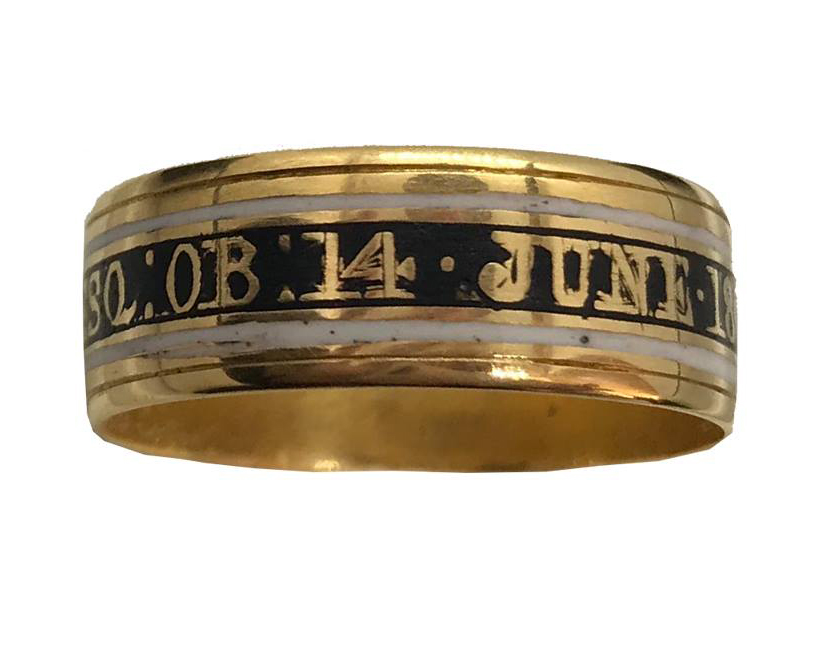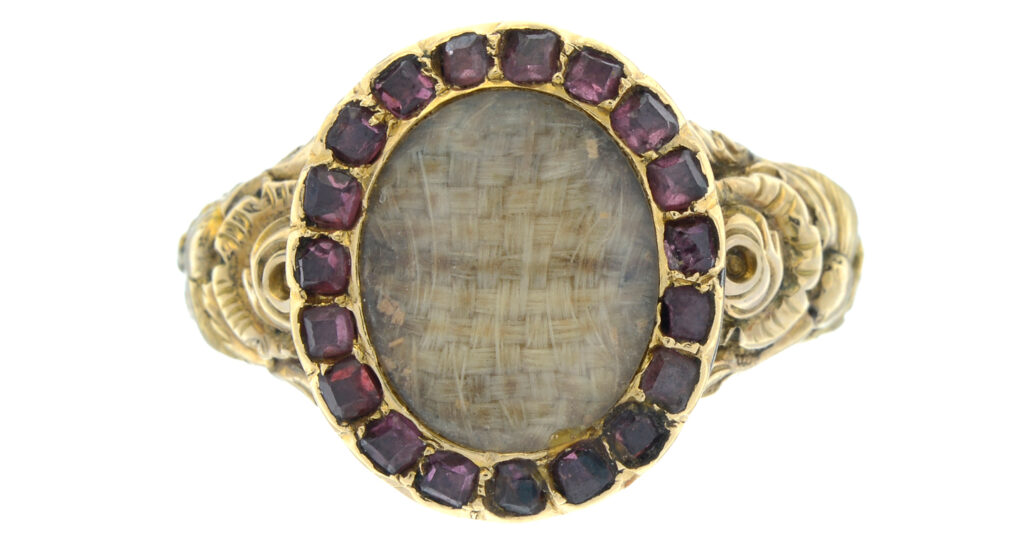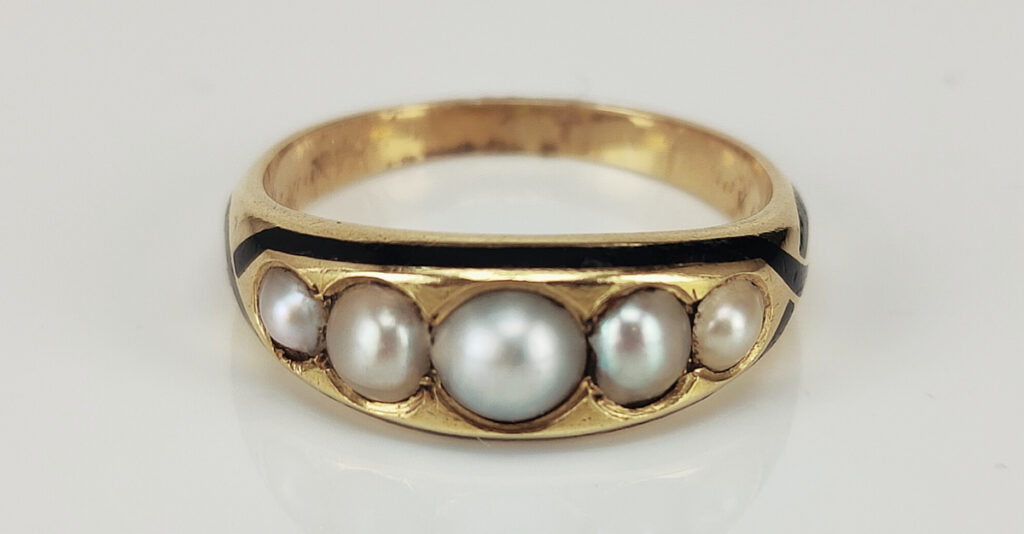Louis XVI Mourning Ring
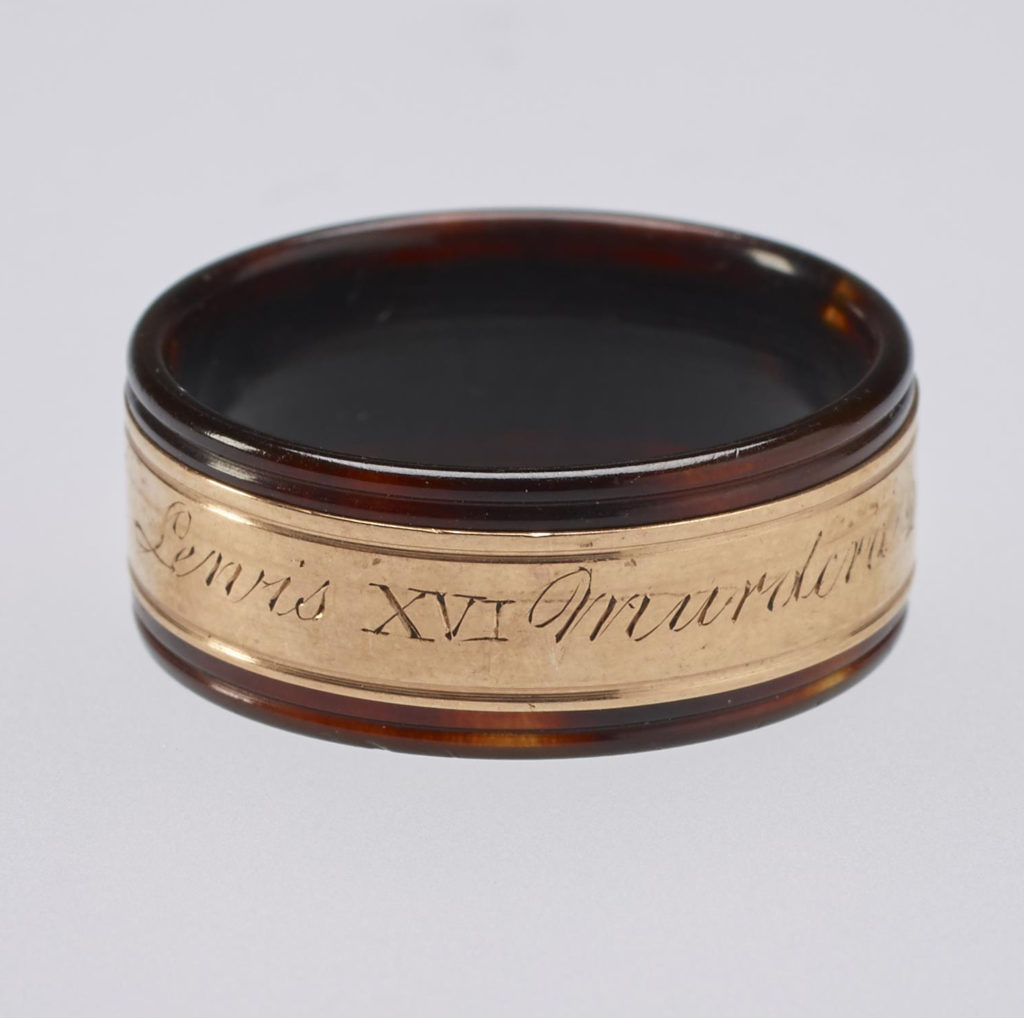
Memorial jewels, particularly those created for national pride, are created during moments of widespread grief and intended to send a message. The message of these jewels is to convey the personal sentiment of hope for a national movement, a country or an event in time that cements the country, or ideology, of where that person holds allegiance. Because of time changing the popular feelings towards a monarch or nation during a groundswell movement, hindsight changes contemporary feeling, be it through economic, political or social stability. What was once negative might be seen as positive, such as in the reinstatement of Charles II following the Commonwealth (1649-1660) after the execution of Charles I.
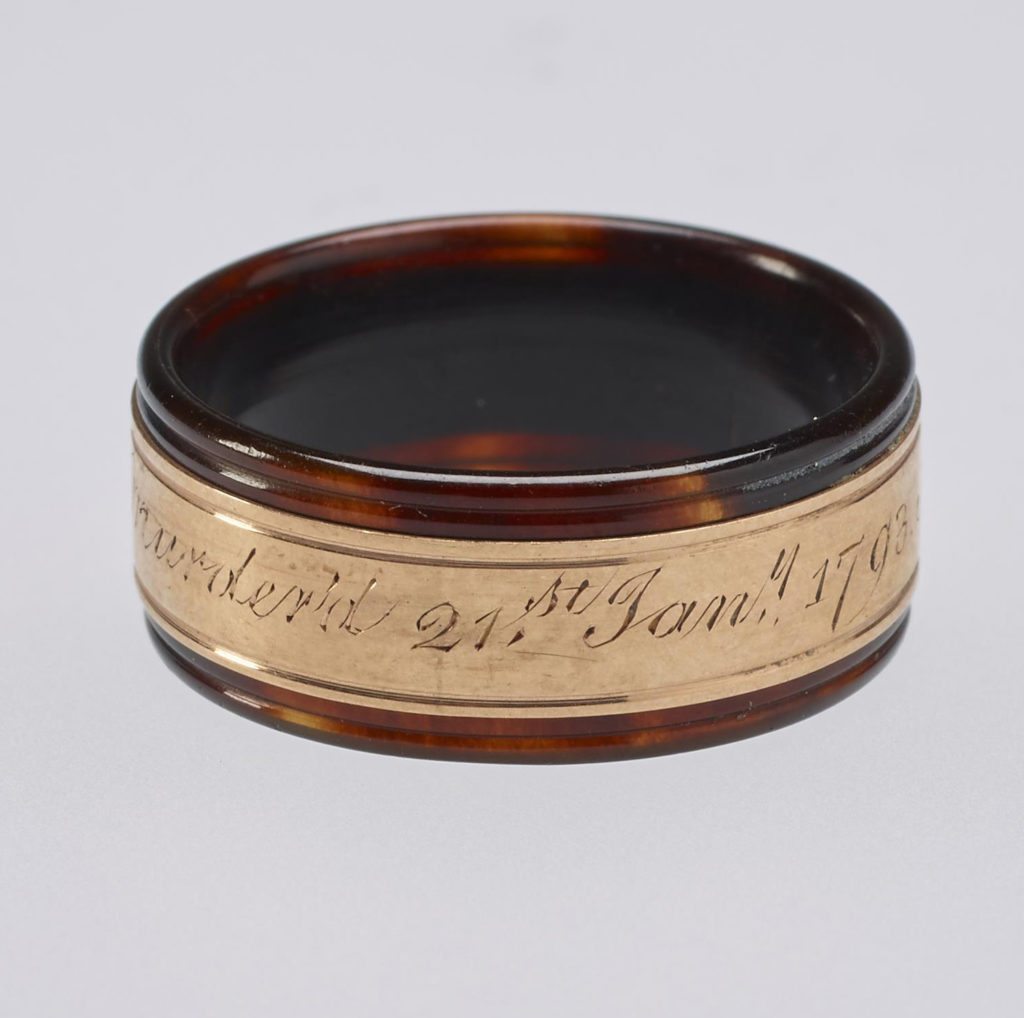
This ring, which was created for Louis XVI and is in the possession of the Royal Collection UK, offers an insight into nationalistic pride during the tumultuous times of the 1793-1815 period.
The main material in this ring is tortoiseshell. Tortoiseshell is actually the natural shell of the sea-going turtle and not actual tortoises. Banned in 1973 by the Convention on International Trade in Endangered Species, tortoiseshell is often replicated in stained horn, cellulose acetate, and plastic to emulate its unique dark brown to yellow mottled look.
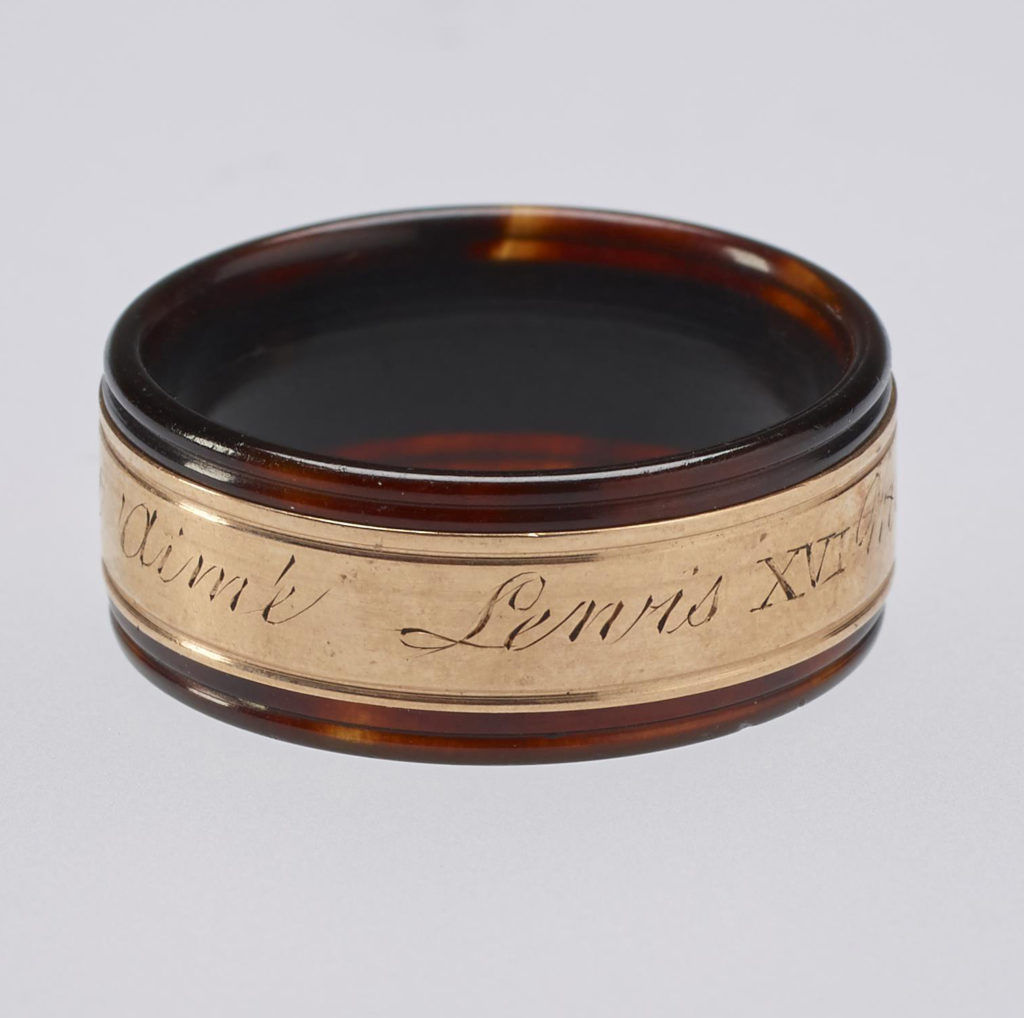
When polished, tortoiseshell has a lustrous shine and was often inlaid with gold during the 19th century. It was used in very geometric shapes and patterns during this time, which made it easy to work with, as it could be pressed into moulds and carefully dried. This allowed it to take on cameo effects and have the gold inlay be placed insight the low-relief areas.
As with the style of this ring, the simple and natural shape of the band with its indentations align with the popular shapes of the first quarter of the 19th century. The opulent styles of the Neoclassical period (c.1760-1820) were disappearing and these more elegant and basic styles were becoming prominent. Of note, refer to this black and white enamel mourning band below:
Note how simple it is in its design. There are no excessive flourishes, no elements of Rococo or Baroque, which would be introduced through the Gothic Revival period and subsequent revival periods in the 19th century. Simplicity and the basic colour elements become the standard of the c.1800-1820 period, which aligns to the burial date of Louis XVI in 1815. Consider that Louis was executed in 1793 during The Terror following the French Revolution and the public sentiment towards the crown during this time. Nationalist pride was was invested in the French First Republic and not in the commemorating of an unpopular Crown, so for this ring to be contemporary to 1793 brings into light some questions that need to be asked about it.
The Neoclassical style was the common style of the time, but this took more reliance on access to gold, something which was highly prized during The Terror. Aristocratic homes were sacked and jewels were taken, with the gold being taken and gems flooding the European market due to their lack of worth, lowering prices for precious gems. Below is an example of a typical mourning ring from the 1790s:
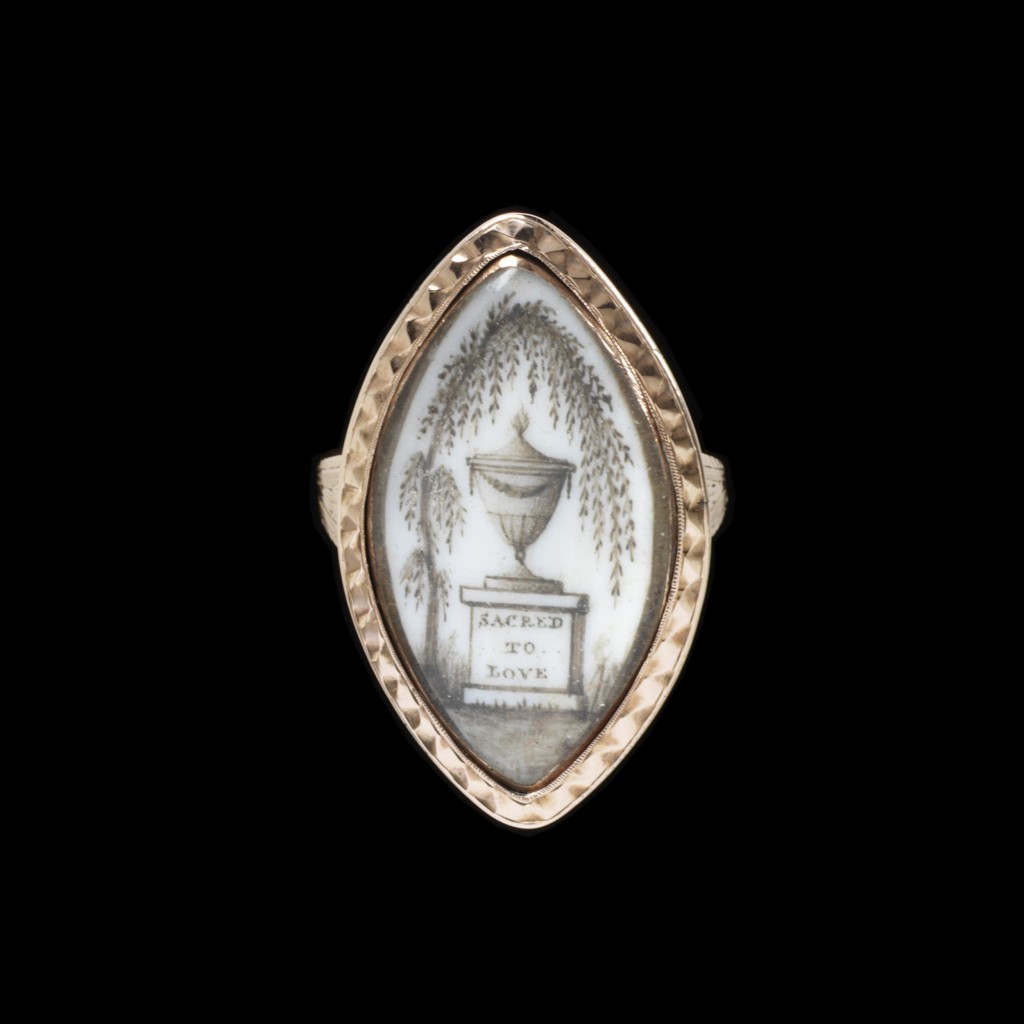
While basic bands did exist, the style, along with geometric shapes and clean lines, really only came into prominence by the c.1800 period. Louis XVIII of France, Louis XVI’s brother, was called to the throne in 1814 by Napoleon Bonaparte’s senate and in the Treaty of Paris, French borders were established, freedom of religion was accepted, economic reforms began and better representation in politics through annually elected voting. Napoleon reclaimed power on the 26th of February, 1815 during a period known as ‘Hundred Days’, but was defeated by the Duke of Wellington and Field Marshal Blücher at the Battle of Waterloo on 18 June.
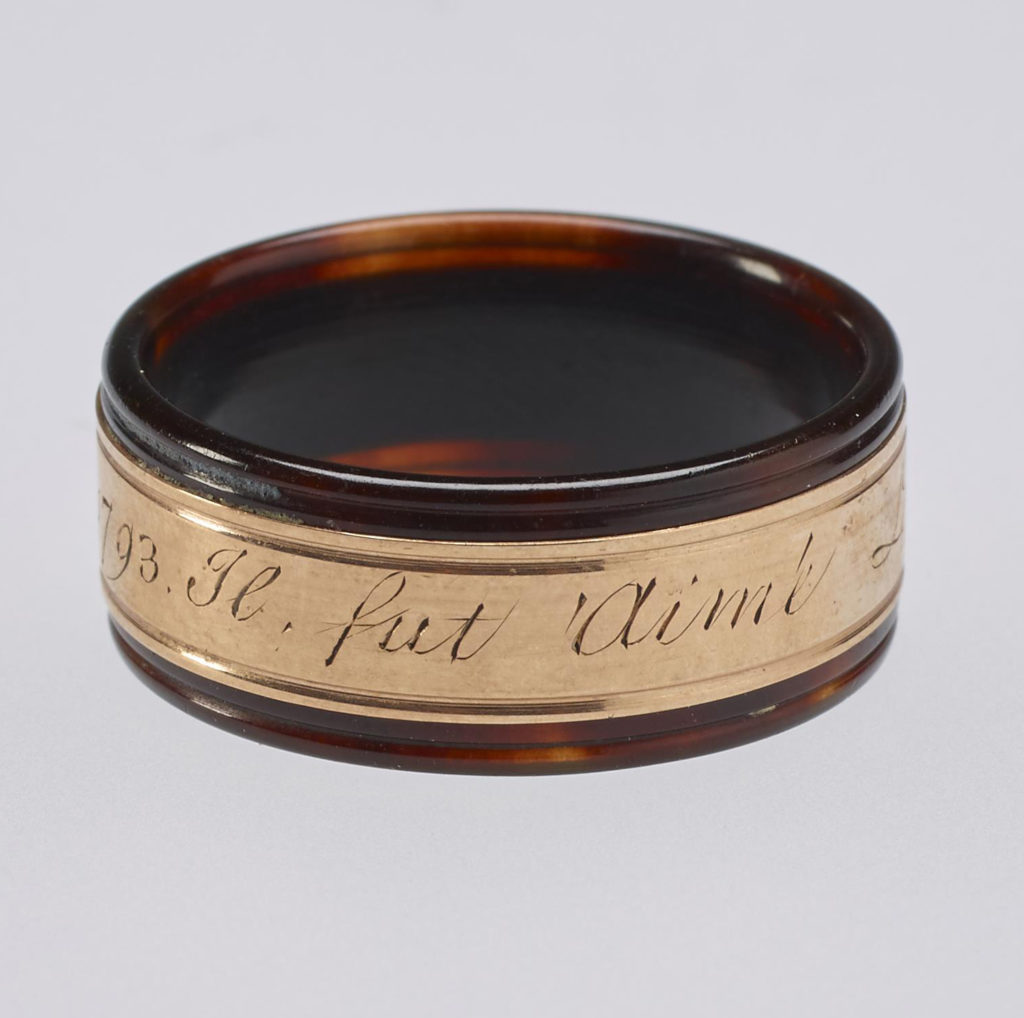
Of note during the exile of Louis XVIII during the revolution and the Hundred Days, there was support of the Bourbons by the British. The ring in this article is from the Royal Collection UK and correlates with a new nationalism that coincided with the reinstatement of Louis XVIII; a French support not commonly seen in England previous to this period. Louis XVIII was reinstated with protection by the Allies (notably, the Duke of Wellington) following Napoleon’s defeat and reigned until 1830.
In 1815, Louis XVI and Marie Antoinette’s remains were reburied in the Basilica of St Denis, which was the royal acropolis of the French Monarchy. Much in the same way that Charles II’s reinstatement following the Commonwealth of England lessened the powers of the monarchy and put more emphasis on the parliament, Louis XVIII was the same. This promotes more international stability and a ring, such as the one in this article, becomes a memorial piece to commemorate a king who was now seen through a different lens. Gone was the unpopular stigma of the monarch following the French Revolution and now there was a new, more stable system.

Memorial jewels made after a large scale event are still being produced today, be it a mourning ring for Lord Nelson following the Battle of Trafalgar, or even modern catastrophic events that still produce tokens of memory in the 21st century. This ring may have been produced after the reburial of Louis XVI, which would align with a new nationalism and stability in a country that hadn’t had a moment of peace since the latter 18th century.
Further Reading
Read more about this ring over at Patreon, where I discuss it and its importance in further detail:




